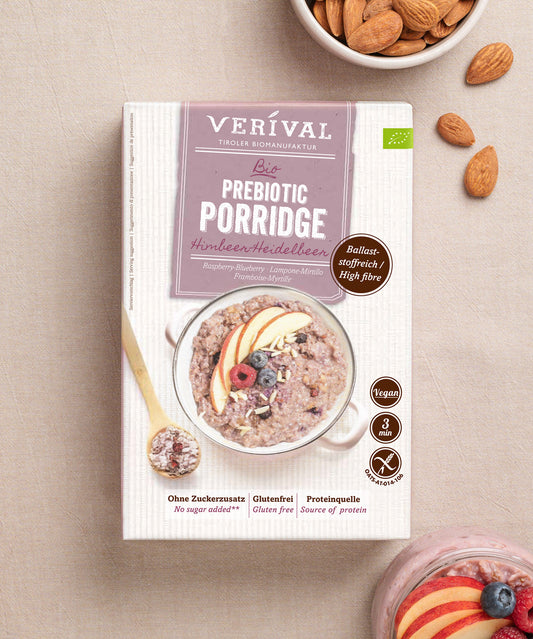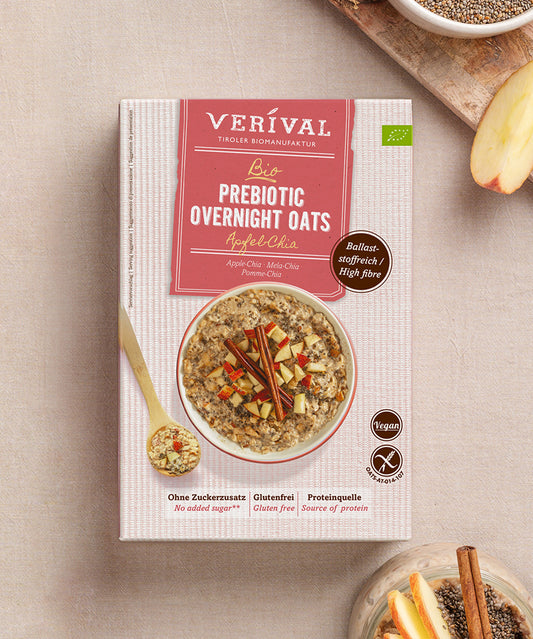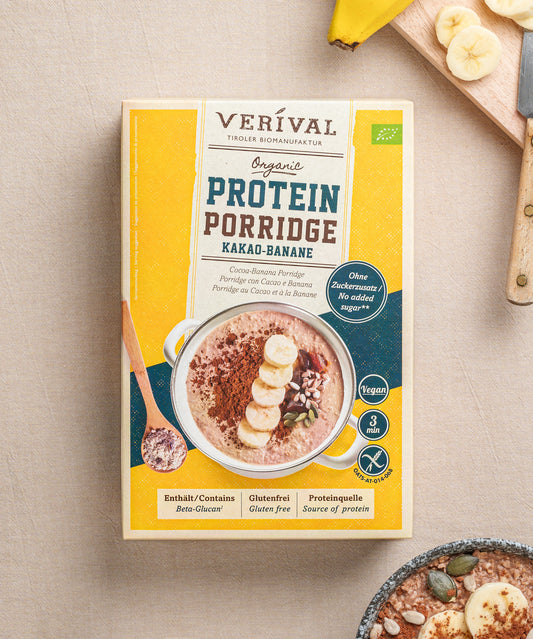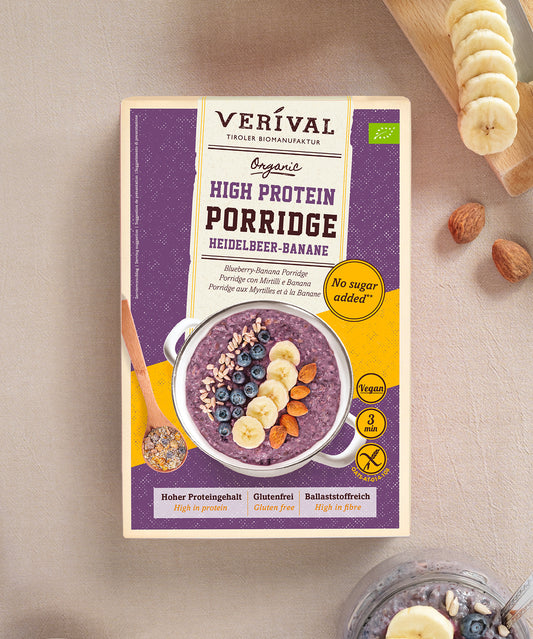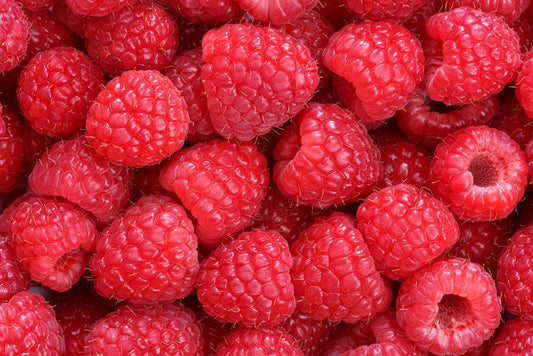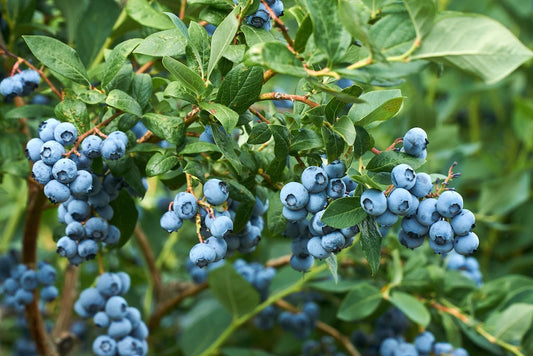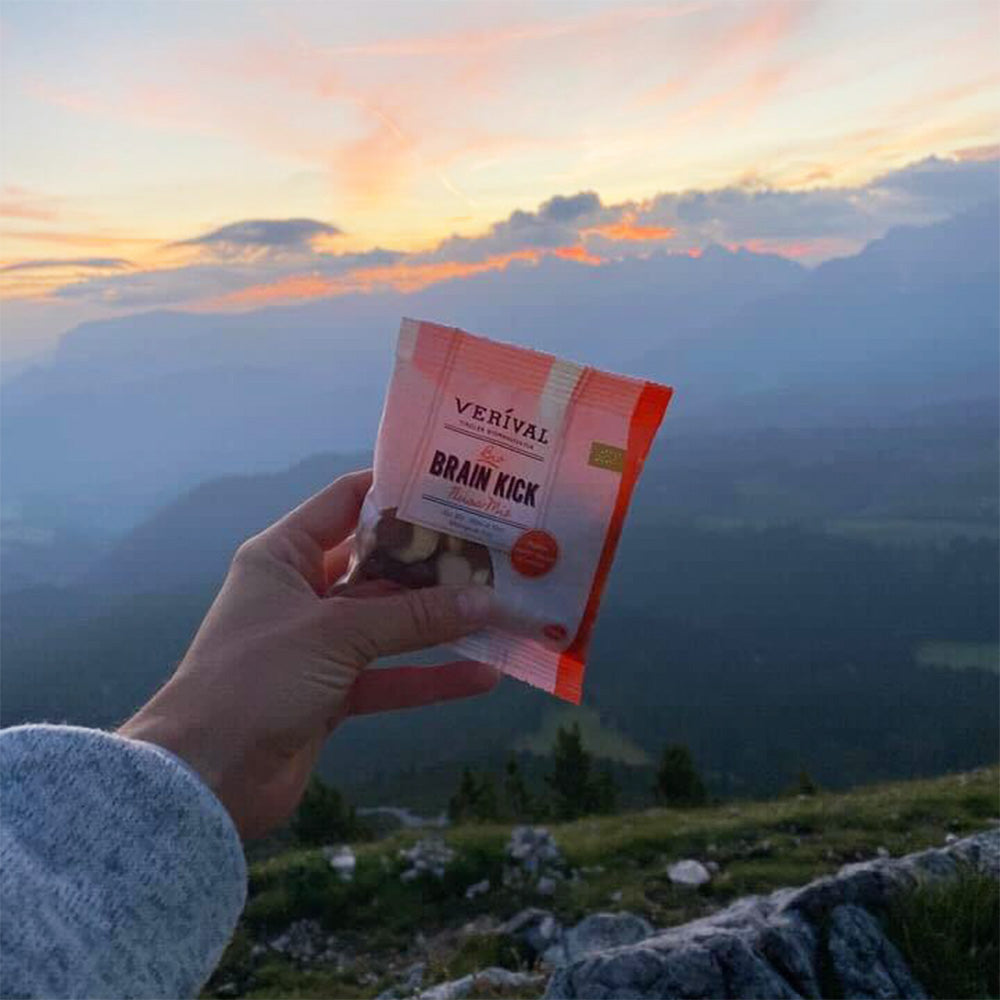“Does this contain gluten?” Even people who don't have any problems with it are asking themselves this question more and more often. Many consumers swear by a low-gluten or gluten-free diet. But is going without gluten healthy at all?
In this article, we'll start by giving you an overview of what gluten actually is and what advantages a low-gluten diet can offer. We also introduce you to gluten-free foods for your meals. And last but not least, you will also learn what your delicious, gluten-free breakfast can look like.
What is gluten?
Before we address the question of whether it is healthy to avoid gluten, it is first necessary to clarify what gluten is.
Put simply, gluten consists of various proteins found in the seeds of certain types of grain. You may have also heard the term glue or gluten before. This is due to the properties of gluten: when mixed with water, gluten binds wheat flour into a homogeneous dough.
The food industry uses this effect, which is why you can find gluten as a thickening agent in many ready meals.
Intolerance vs. celiac disease – the difference
Even though gluten is contained in many products and even certain staple foods, not everyone can enjoy eating them. The diseases in which gluten triggers symptoms are grouped under the umbrella term “gluten intolerance”.
In people with celiac disease, gluten intake causes damage to the intestinal mucosa. These inflammations in the small intestine prevent nutrients from being properly absorbed. In addition, sufferers report symptoms such as fatigue, weight loss, bloating, etc., some of which can be severe.
The difference between celiac disease and “normal” gluten intolerance is that the former is an autoimmune disease and the latter can be counted as an allergy. In this case, antibodies are formed after ingestion because the proteins contained in the body are seen as a danger. The symptoms are also generally milder.
In addition, there is the so-called gluten sensitivity in which those affected report intestinal complaints after eating gluten-containing foods. However, this is not an autoimmune disease or allergy. An increased frequency of this type of intolerance can be observed in patent holders who suffer from irritable bowel syndrome.
A slightly different form of intolerance is the wheat allergy. Here, external contact with wheat can already lead to symptoms such as respiratory and skin complaints. However, wheat allergies are rare in adults and more common in children.
The advantages of a gluten-free diet
Apart from the fact that many people cannot eat products containing gluten due to intolerances or allergies, many voluntarily choose to avoid gluten. Surely that has numerous advantages, doesn't it?
One reason may be the modern wheat. Over the last few centuries, wheat has been “bred up”, i.e. the original plant has been increased in the number of chromosomes (structures in the cell that consist of our DNA and various proteins) through selection and crossing. The reason for this is that the modified wheat has a higher resistance to environmental conditions and pests and a higher yield. However, the immune system can also react sensitively to the multitude of proteins, since the structure differs greatly from that of the original grain.
Are there any disadvantages?
As with any unbalanced diet, gluten-free foods can lead to malnutrition. Substitute products often contain less fiber and more fat and calories.
This also invalidates the argument that a gluten-free diet is suitable for losing weight. If you compare normal products with gluten-free alternatives, the latter often contain more.
It is important to note at this point that we do not want to make any recommendations for or against the consumption of gluten. If you feel that a gluten-free diet is good for you, then it is advisable to consult your doctor.
These products should be avoided
Now that you know so much about gluten and the reasons for avoiding it, we would like to introduce you to the foods that you should and should not eat.
In general, gluten is found in grains, especially in wheat, spelt, barley, rye, bulgur and couscous. This applies to all possible forms, such as flour, flakes, semolina or bran.
Cereals and cereal-like products such as amaranth, buckwheat, corn, rice, millet or quinoa can be eaten with confidence.
You should also be careful with foods that contain wheat products that have been further processed, such as breaded products. Even if foods don't contain gluten, cross-contamination with ingredients that do can occur during production. So, if you want to be on the safe side, look for the “gluten-free” label.
As already briefly mentioned, it is possible that products containing gluten may be used as a thickening agent in the production of food. However, gluten should not be confused with glutamate, also known as E620 to E625. However, these are flavor enhancers that are often used in Asian cuisine in particular. They consist only of individual amino acids and not – as with gluten – of a complete protein.
Are oats gluten-free?
At this point, you may be wondering whether oats contain gluten. Basically, the flakes contain a very small to no amount of the substance. However, contamination with gluten often occurs during the production process, which is why the flakes cannot be described as gluten-free.
Did you know that a large number of criteria have to be met in order to be able to use the term “gluten-free” for the production of gluten-free oat flakes? For example, the processing machines have to be thoroughly cleaned in order to comply with the regulations.
More about oat production and gluten
What Verival does for you
At Verival, we are also aware that more and more people have to avoid gluten or choose to do so. That's why we have our own category “gluten-free”, where you can easily view our complete gluten-free range.
Our gluten-free breakfast idea
Have we whetted your appetite for preparing your own gluten-free breakfast? Then why not try out our simple gluten-free recipe right away. You can prepare the overnight oats the night before, making them the perfect meal prep option.

Gluten-free overnight oats with berries
Ingredients
- 60g Verival Strawberry Chia Porridge
- 180 ml milk or gluten-free plant-based drink (e.g. rice drink)
- Fruit of your choice (raspberries, strawberries)
- 1 tsp agave syrup
Preparation
-
Place the gluten-free Verival Strawberry Chia Porridge in a jar of your choice. For example, in a mason jar.
-
Then add about twice the amount of liquid and mix everything together well. If you like, you can also add a teaspoon of agave syrup.
-
Then put the gluten-free overnight oats in the fridge for at least 2 hours or overnight.
-
After the overnight oats have swollen in the fridge, you can refine them with toppings of your choice. Especially fresh or frozen berries go very well with this overnight oats variant.





